
The wobbly foundations of this website are not intended to withstand the load of a full-fledged preface, or even a hefty “About.” And yet, inspired by a recent re-reading of The Man Without Qualities, we have overcome our fear of ridicule and decided to present the theory behind our humble enterprise. As Musil wrote in his novel:
“Imagine, if you will, what it is to have a heavy world weighing on tongue, hands and eyes, a chilled moon of earth, houses, mores, pictures, and books, and inside nothing but an unstable, shifting mist; what a joy it must be whenever someone brings out a slogan in which one thinks one can recognize oneself.” [Translator: Sophie Wilkins]
Those of you inclined towards a more romantic idea of the soul, may believe, like Tarkovsky, that our feelings are unique and, because they are unique, they are inexpressible or require a unique language to express them.
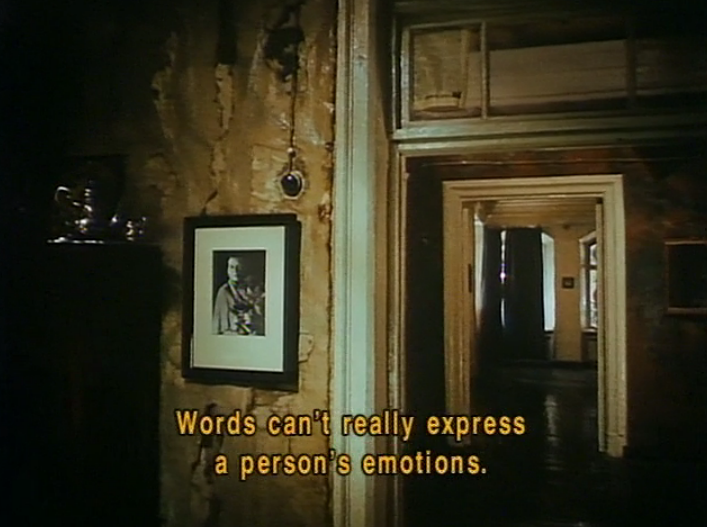
Before the Romantics came and fomented this illusion, the Ancients thought that since everything had already been felt and said, any artistic expression was necessarily an imitation. Later, Rimbaud noted the inescapable presence of the Other in language, which prevents us from finding the elusive truth of the Self.
Today, the success of the cinema stems from people’s abandonment of the desire to be different, seeking instead the pleasure of shared expressions, finding community in the cliché.
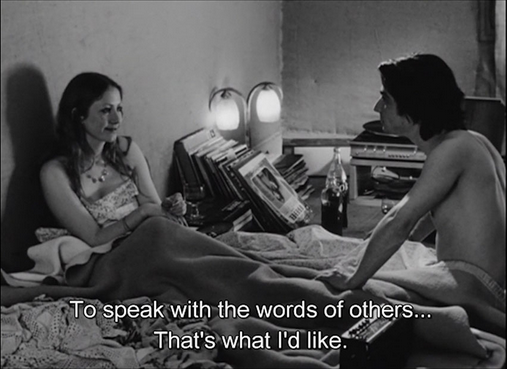
Kurt Vonnegut, Jr. showed how television greatly contributed to forging a common national language. Milo, a character in Breakfast of Champions, welcomes another character with these words: “Kilgore Trout, This is your life!” The author comments that “Milo used a line from a television show which had been popular a few years back. Much of the conversation in the country consisted of lines from television shows, both present and past.”
That same year (1973), the main character of The Mother and the Whore, played by Jean-Pierre Léaud, explains: “To speak with the words of others … That’s what I’d like.”
What Vonnegut considered a mind-numbing mechanism driving the decline of American culture, becomes a sort of ideal, in the mouth of Jean Eustache’s film character, to be sought in self-effacement. This device featured regularly, in fact, in the films of the New Wave. Upon arriving in Alphaville, Lemmy Caution answers his interrogators with quotes from Bergson, Nietszche and Pascal. Godard was often criticized for trying to shield himself by using quotations in the place of true dialogue. His reply was always that one cannot really speak with an alphabet that belongs to everyone.
Movies, like songs, have always proffered pre-packaged phrases. In 1997, Alain Resnais’ film Same Old Song, celebrated the connection between the two major forms of popular expression of the 20th century: the characters all draw from the same source to communicate their emotions. The question is whether they can feel anything other than what they find in that shallow pool.
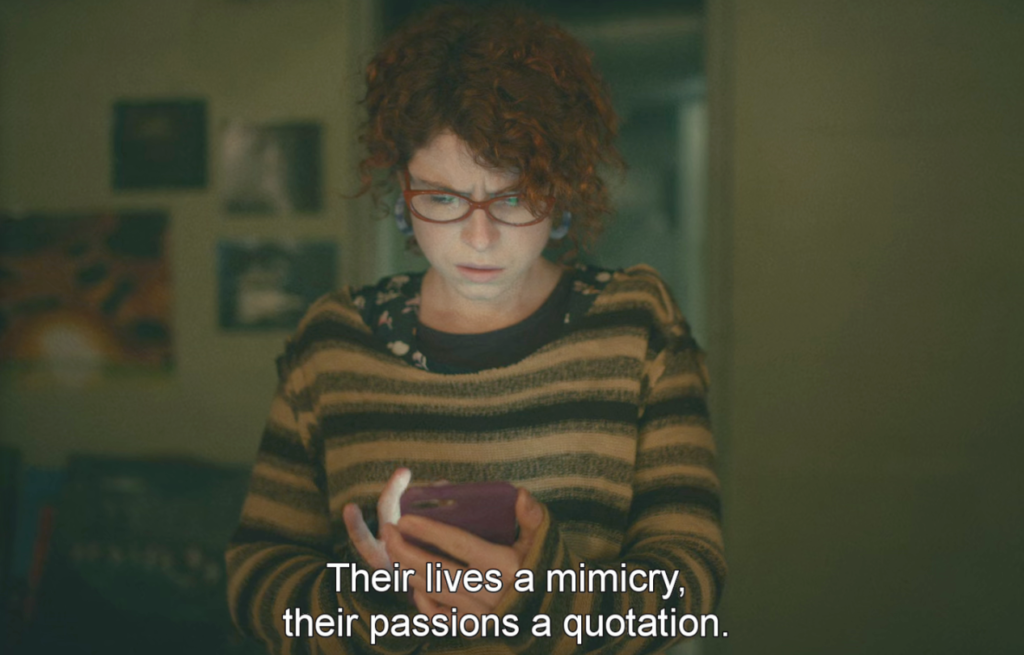
So-called cult films also produce lines that become fodder for conversations. This is perhaps precisely what defines the otherwise vague notion: a cult movie is notable not for its esthetic qualities but for its ability to contribute to a culture of mass reproduction. Lines that become cult might be witty (Woody Allen, Ben Hecht), but that is not what characterizes “cultness,” and markers of uniqueness can in fact prevent their elevation to cult status. A genuinely cult phrase stands out for its banality – dare we say, stupidity – which allows it to slip into everyday language. The same phenomenon explains the viral spread of memes.
The characters in Pierrot le Fou quote Rimbaud but are in turn destined to be quoted themselves. Should anyone today pronounce the words “J’sais pas quoi faire,” you can be sure someone will follow with “Qu’est-ce que j’peux faire,” in the same whining tone as Anna Karina.
As the American psycho-linguist S. Neruda demonstrated in his classic theory, the degree of efficiency (e) of a line of dialogue can be measured in a simple formula, now known as the Neruda equation: e = n/s. Where n is the notoriety of the speaker, and s denotes the degree of singularity of the statement.
Morris and Goscinny toyed with this formula in Jesse James (1969), part of the Lucky Luke comic book series. Their character Frank James, far more erudite than the real-life bandit, frequently expresses himself with supposed quotations of Shakespeare.
The ratio of the prestige (n) of the Elizabethan playwright to the profoundly un-singular (s) phrases is used to great effect.
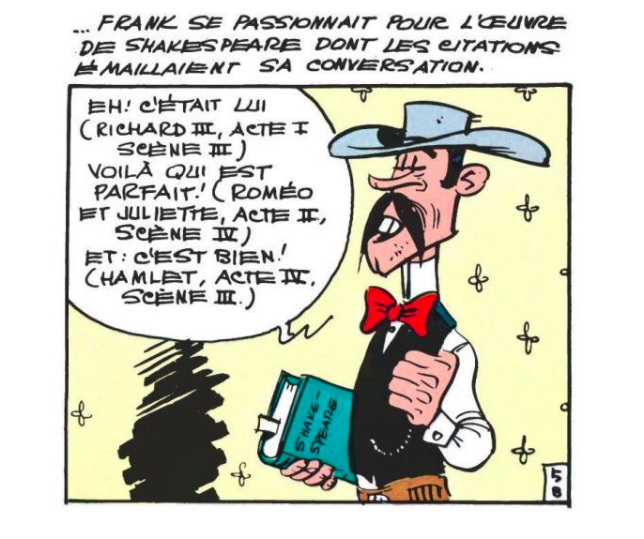
Likewise, amongst the 8500 captions (from 2200 movies) you’ll find on this website, only a handful express a new or profound idea. Consider the brutal simplicity of the phrase “You talkin to me?” It scores high on the banality scale, and the speaker (Robert De Niro in Taxi Driver) enjoys immense notoriety. Thus, we arrive at the perfect recipe for a cult line of dialogue, picked up verbatim, 20 years later, by Vincent Cassel in La Haine.
We could obviously say the same thing of the first line of Remembrance of Things Past.
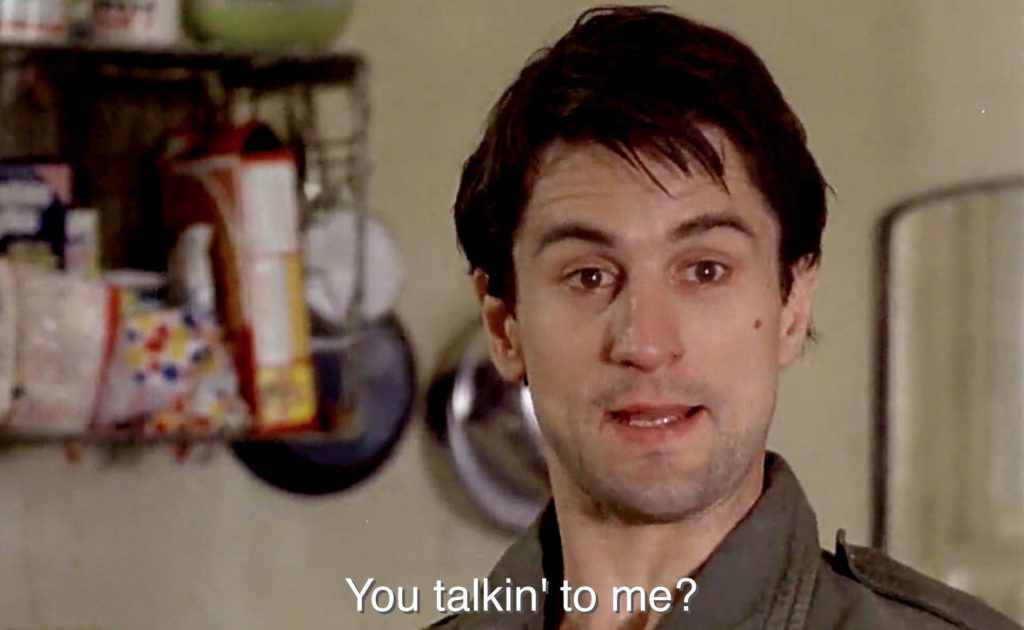

So, there you have the conceptual underpinnings of the SIWC website. Now, it’s time for some practical suggestions for navigating these pages.
This website is, above all, meant to offer you a cinephilic peregrination, best enjoyed if you have no idea where you’re going. Or it can take the charted course of a trivia challenge: from which film is each caption taken?
You could take yet a different tack and indulge in the simple pleasure of decontextualizing the images, looking for a piece of Hollywood or Cinecittà drama that matches a situation in your daily life, or expresses your current mood.
Sayitwithcaptions can also be used to learn English or French. Searching the key word “Insults and profanities,” or the theme “Reproach, rudeness,” for example, will provide you with hundreds vulgar retorts suited to any situation requiring scathing condemnation.
Lastly, we encourage you to create your own messages with the images provided here. In the 100 years that the talkies have existed, nearly every possible human experience has been expressed. In this catalogue of emotions, you’re sure to recognize the many nuances of your own affection, your own misery or anger (but, wonders Ulrich, the Man without qualities, is it your own anger if so many others have spoken of it already, and better than you?). Use the Themes and Keywords, to find a fitting image for birthdays, the new year, or some other elated moment of shared humanity. Those who are painfully shy or inarticulate can also, like Cyrano de Bergerac’s friend Christian, resort to having others speak what they dare not or cannot express.
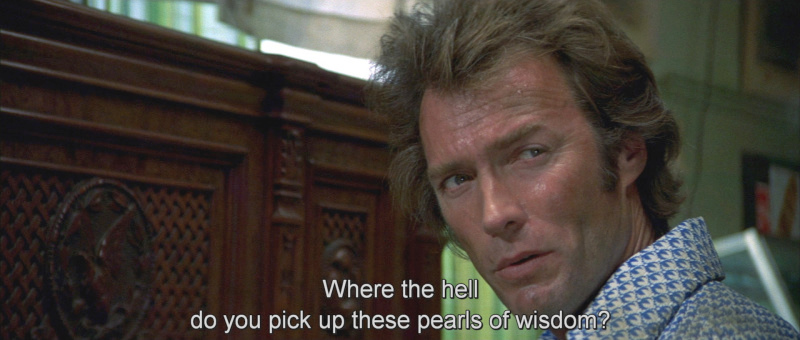
The images on this site have mostly been found on the internet; they will be removed upon request by the rights-holders.
The websites we have most enjoyed and regularly plundered are :
https://freshmoviequotes.tumblr.com/
https://colettesaintyves.tumblr.com/
http://www.dvdbeaver.com/
http://shangols.canalblog.com/
https://alexonfilm.com/